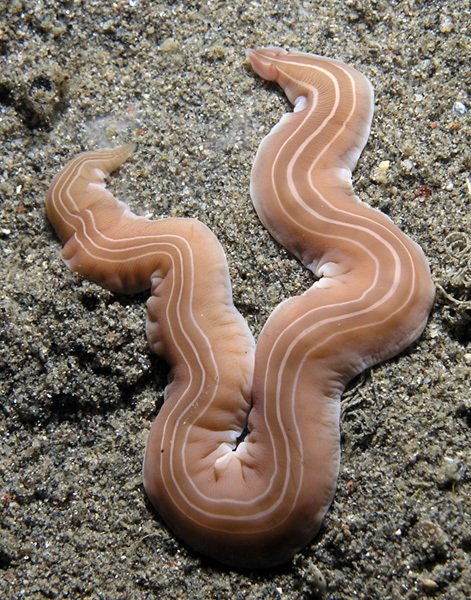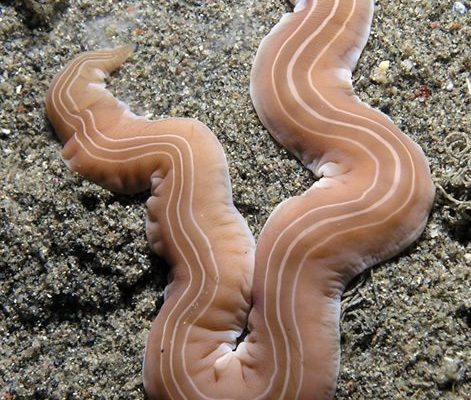
Ribbon worms, or *Nemertea*, are soft-bodied animals that can stretch far longer than you might expect. Some species can reach up to 30 meters! They have a long, flat body that wriggles through mud and sand, almost like a snake. Because of their unique morphology and behavior, ribbon worms can be found in various marine environments, from tidal pools to the deep sea. Understanding their ecological importance is vital for appreciating the ocean’s complex web of life.
So, why should we care about ribbon worms? Here’s the deal: they contribute significantly to nutrient cycling, help control prey populations, and even act as indicators of environmental health. Let’s dive deeper into each of these roles and discover why these elongated creatures deserve our attention.
1. Nutrient Cycling: The Unsung Contributors
Ribbon worms may seem small, but their impact on nutrient cycling is anything but insignificant. When ribbon worms feed, they consume organic matter, such as dead fish and decaying plant material. This feeding process breaks down the organic matter, releasing **essential nutrients** back into the ecosystem. It’s like they’re nature’s recyclers, taking what would otherwise be waste and turning it into something beneficial for other organisms.
Moreover, ribbon worms play a role in aerating the sediment. As they burrow and move through the mud, they create channels that allow water and oxygen to penetrate deeper into the substrate. This aeration supports the growth of beneficial microorganisms and promotes the overall health of the ecosystem. Without these tiny workers, the ocean floor could become a stagnant place, unable to support the diverse life forms that rely on it.
2. Prey Regulation: Nature’s Balance Keepers
Let’s talk about predator-prey dynamics. Ribbon worms are not just passive feeders. They are also active predators, hunting down smaller creatures like worms, crustaceans, and even small fish. Their ability to consume a wide variety of prey helps keep those populations in check. You might be wondering how that matters to the bigger picture. Well, a balanced food web is essential for maintaining healthy ecosystems.
The presence of ribbon worms can indicate the health of prey populations. If they thrive, it usually signals that their food sources are abundant and healthy. Conversely, a decline in ribbon worm populations might suggest problems in the ecosystem, like overfishing or environmental pollution affecting their prey. So, by monitoring ribbon worm populations, scientists can gauge the well-being of the entire marine environment.
3. Indicators of Environmental Health
Speaking of monitoring, ribbon worms are also valuable bioindicators. This means they can provide insights into the health of their habitats. Their sensitivity to changes in their environment makes them excellent candidates for studying pollution levels and habitat degradation. Think of them as the canaries in the coal mine for marine ecosystems.
For instance, if ribbon worms start to disappear from an area, it can signal that something is wrong—like increased pollution or habitat loss. Researchers can then investigate further to determine what is affecting these creatures. Keeping an eye on ribbon worms helps protect other marine life and maintain the intricate balance of ocean ecosystems.
4. Habitat Formation: Creating Spaces for Life
Ribbon worms also contribute to habitat formation. As they burrow into sediments, they create microhabitats for other organisms. These little spaces can provide refuges for smaller creatures, offering protection from predators and harsh environmental conditions. It’s like ribbon worms are building tiny apartments for various marine life!
Additionally, the organic matter they leave behind serves as a food source for other organisms, further enriching the ecosystem. When ribbon worms thrive, they help promote biodiversity, which is vital for robust and resilient ecosystems.
5. The Role in Scientific Research
Interestingly, ribbon worms have caught the attention of scientists for more than just their ecological roles. Their unique biological features—like their ability to regenerate and their complex nervous system—make them subjects of study in various fields. For example, researchers are looking into how ribbon worms regenerate lost body parts, which could have implications for medical science, particularly in understanding healing processes.
Studying ribbon worms can also help researchers learn more about evolutionary biology. Understanding how these creatures have adapted to their environments provides insights into the evolution of marine life. The more we explore these fascinating animals, the more we understand the broader complexities of life in the ocean.
6. Conservation Efforts: Protecting Ribbon Worms
With all these essential roles, it’s important to consider how we can protect ribbon worms and their habitats. Threats such as pollution, climate change, and habitat destruction can have devastating effects on marine ecosystems, including the ribbon worm population. Conservation efforts aimed at reducing pollution and protecting marine habitats are crucial for ensuring these creatures can continue their vital work.
Community awareness and education can also make a difference. By fostering an appreciation for all aspects of marine life, including the lesser-known ribbon worms, we can inspire more people to take action toward conservation. Small changes in our behavior, like reducing plastic use and supporting sustainable fishing practices, can significantly impact the health of our oceans.
7. The Future of Ribbon Worms and Their Ecosystems
So, what does the future hold for ribbon worms and their ecological roles? As we become more aware of the importance of biodiversity, there’s hope that greater emphasis will be placed on protecting not just the charismatic species but also the lesser-known ones like ribbon worms. Science continues to uncover their secrets, which may lead to even more discoveries about how they can help us understand the health of our oceans.
In conclusion, the ecological importance of ribbon worms cannot be overstated. From nutrient cycling and prey regulation to acting as indicators of environmental health, these creatures play integral roles in marine ecosystems. As we continue to learn about them, let’s also take steps to protect their habitats and support marine conservation efforts. After all, every creature, no matter how small, has a part to play in the grand tapestry of life beneath the waves.

